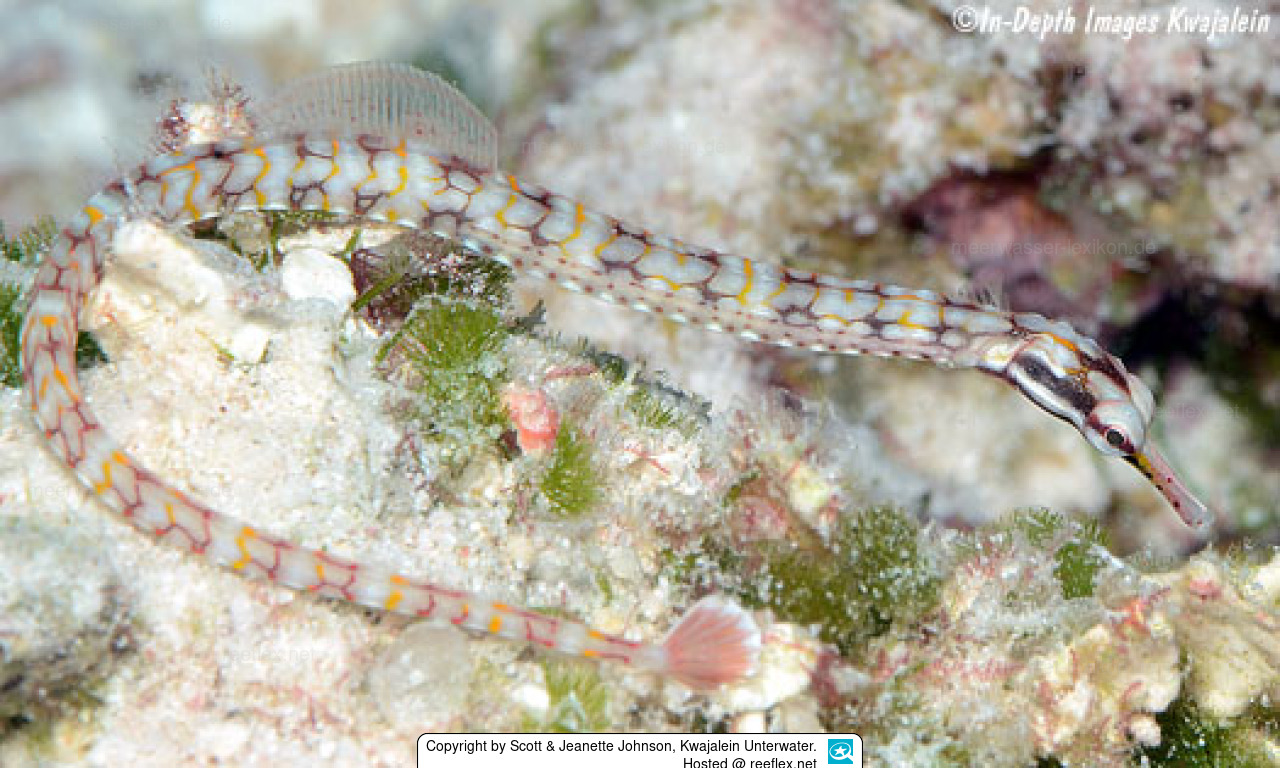Info
Corythoichthys conspicillatus prefers sheltered lagoons, likes to sit elevated on pinnacles or corals, the animal also occurs in seaward coral reefs.
In the past, the pipefish was often misidentified as Corythoichthys flavofasciatus, a species that is, however, restricted to the Red Sea.
Up to now no animals have reached the specialized trade, they would certainly be an optically particularly beautiful highlight in each suitable sea water aquarium.
We would like to thank Brent Tibbatts and Scott & Jeannette Johnson (Kwajalein Underwater) for the photos.
Feeding intake.
The fish take a long time to eat at the beginning, before the food is taken up, a close inspection is carried out. After acclimatisation, the offered frozen food is eaten without problems. It should be noted that wild-caught fish behave differently than offspring when it comes to food intake. In the case of offspring, the size of the fish purchased also plays a role in the choice of food.







 Scott & Jeanette Johnson, Kwajalein Unterwater
Scott & Jeanette Johnson, Kwajalein Unterwater






















